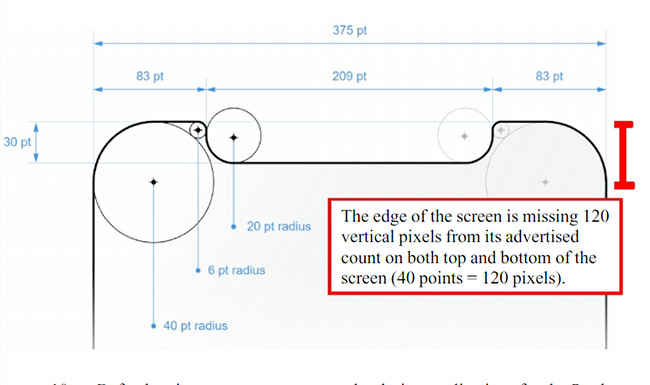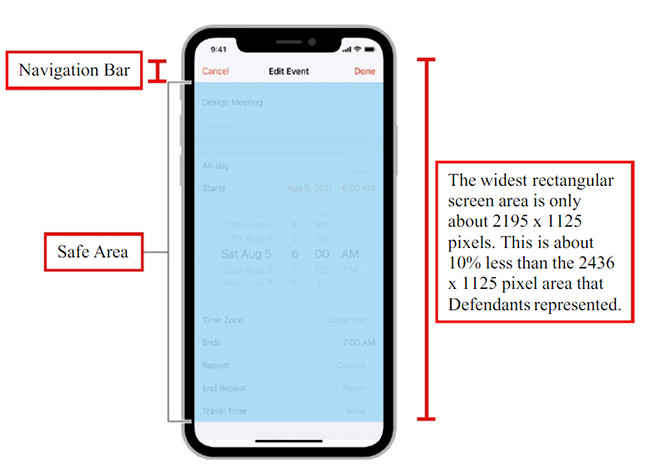
- The widest rectangular screen area usable by applications on the iPhone X is about 2195 x 1125 pixels, or about 10 percent less than the advertised 2436 x 1125 pixels.

- The display size is falsely advertised as being 5.8 inches, while it is actually around 5.6875 inches. Each corner cuts the diagonal by about 1/16 of an inch.
- Most of Apple's marketing materials, renders, choice of wallpapers and angles are purposefully designed to hide the notch, making the front feel like all-screen which is the new iPhones are not.
- The iPhone X display is falsely advertised as being higher resolution than the one on the iPhone 8 Plus, which is not true on a sub-pixel level, since OLED pixels are "false" pixels and only have two sub-pixels, compared to three on the iPhone 8 Plus' LCD. Which works out to 5,481,000 sub-pixels on the iPhone X, compared to 6,220,800 on the iPhone 8 Plus. And that is before taking into account the wrong display resolution.
Some of the complaints listed in the filings seem to overlook the basic tenets of OLED displays, but certain complaints could hold weight. For example, Apple’s use of angles and black wallpapers in all its promotional material to give the impression of the iPhone X (XS and XS Max) as having an all-display front could hold some weight. Additionally, the bits about the maximum rectangular area available to an app could also spell some trouble for Apple.